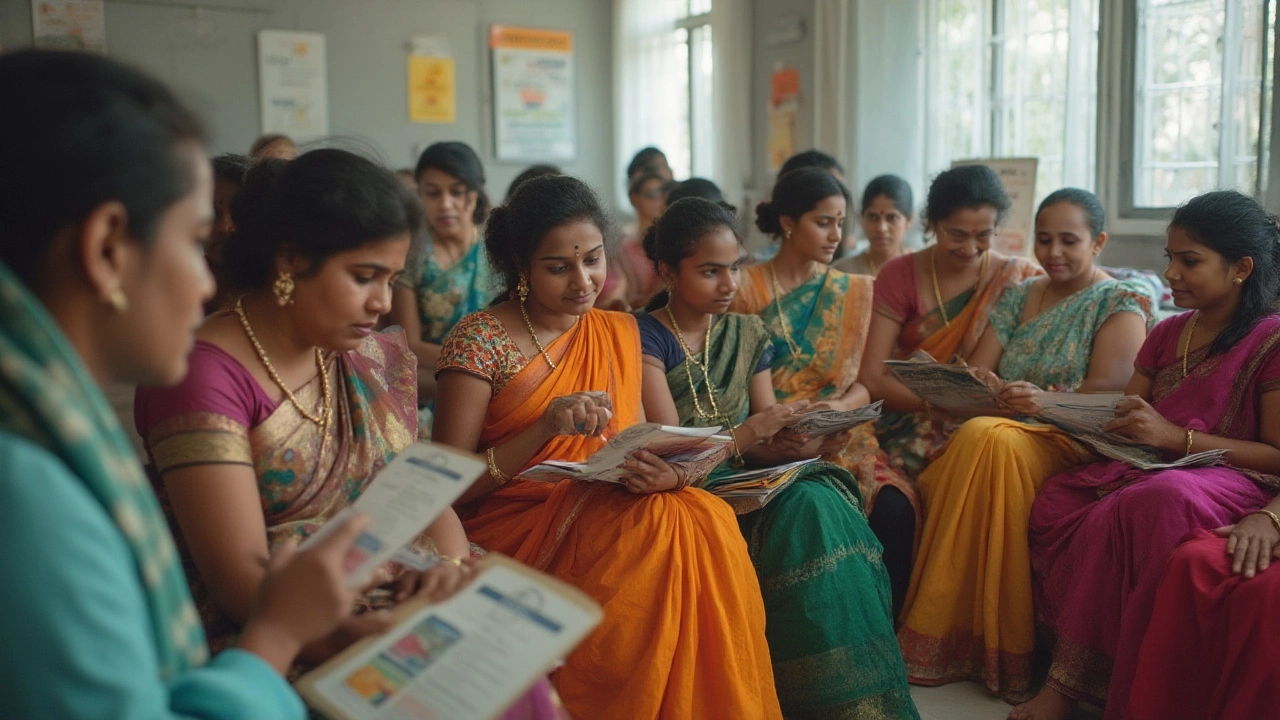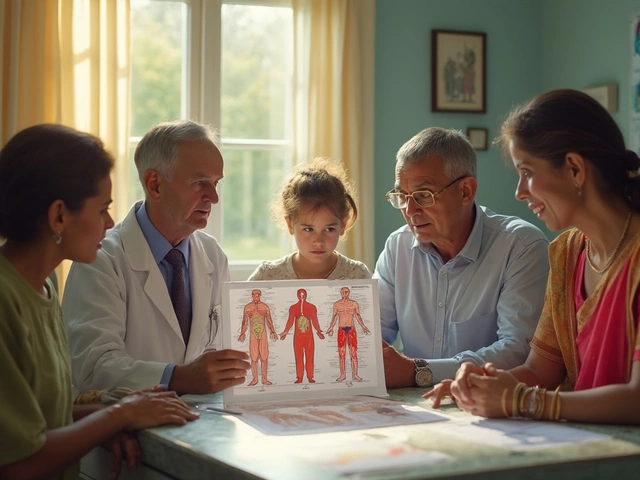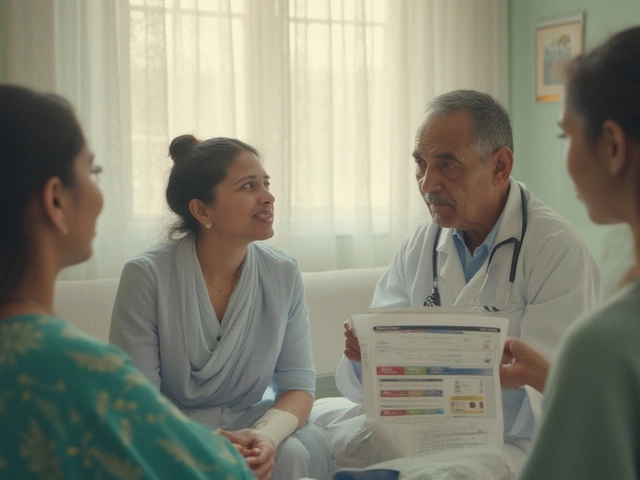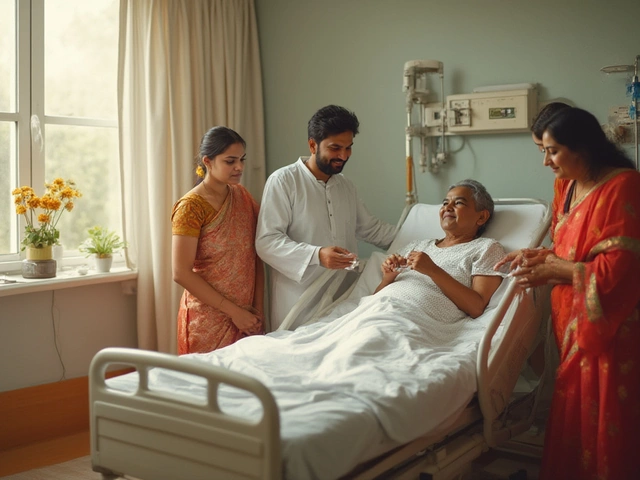I’ve seen questions about 'stage 5 cancer' pop up everywhere: online forums, WhatsApp groups, even in quick chats under mango trees in Bangalore. The thing is, you’ll hear heartbreaking stories about someone’s uncle or best friend who was said to have 'stage 5 cancer.' That phrase sounds devastating, right? But here’s the twist–there’s officially no such thing as stage 5 cancer. Cancer only has four stages, and those numbers, far from just being scary labels, are actually meant to help doctors plan treatment and predict what could happen next.
Why Do People Talk About Stage 5 Cancer?
If you ask five different people what ‘stage 5 cancer’ is, you’ll probably get five different answers. Some mean a cancer that’s come back after treatment. Others mean a cancer that’s spread everywhere and can’t really be treated anymore. You sometimes even meet people who think any terminal cancer is 'stage 5.' Even some newspapers and TV pundits throw the term 'stage 5' around just to signal hopelessness—and that confusion makes things even harder for patients and their families.
But the medical world has a clear rating system. It goes like this:
- Stage 0: Precancer. Super early. The cells are weird but not invading anything.
- Stage I: Cancer is tiny and limited to one spot. Often curable.
- Stage II: Cancer is bigger than Stage I or has started to move to nearby tissue or lymph nodes.
- Stage III: Spread further to nearby tissues or more lymph nodes. Riskier, but some hope.
- Stage IV: Cancer has traveled (metastasized) to distant organs. This is the most advanced stage.
Nowhere will you see a 'stage 5.' So where’s all this confusion coming from? A big part of it is how people try to talk about very advanced, incurable cancer in simple terms. Also, habits get handed down. If you hear 'stage 5' in conversation, it might mean the cancer is at its deadliest point, sometimes called terminal or end-stage cancer, but that’s just a nickname, not a formal diagnosis.
Picture this: When my friend’s mom was diagnosed with late-stage breast cancer in Whitefield, the doctor explained she was at Stage IV. But distant relatives kept calling it 'stage 5' just to signify there was no chance for recovery—which only increased misunderstanding. So if you hear this term tossed around, remember, it’s not the word that matters—it’s the facts of the situation.
How Cancer Staging Really Works (And Why It Matters)
Cancer staging isn’t just for the doctors—it helps everyone involved, from families to hospital billing offices, to make sense of what the disease is doing. Staging depends on a few things:
- Location and size of the main tumor
- Whether lymph nodes are involved
- If the cancer has spread (‘metastasized’) to other organs
The universal system is called TNM. It stands for Tumor, Node, Metastasis. Let’s break that down:
- Tumor (T): How big is the main mass? Has it invaded nearby tissue?
- Node (N): Has it moved into the lymphatic system?
- Metastasis (M): Has it shown up in faraway organs?
If you walk into a government cancer hospital in Bangalore, you’ll hear doctors toss off terms like 'T2N1M0.' It sounds like a robot’s name, but really it describes the story of the cancer–how aggressive, how far, what next. When TNM details are all put together, that’s how the official stage—out of four, not five—gets set.
Staging is crucial. A person with Stage I colon cancer may only need surgery. Stage III might mean surgery plus a mix of chemo and radiation. Stage IV? Most of the time, it’s not about cure, but about making life as comfortable, meaningful, and sometimes as long as possible.
Here’s a comparison table showing survival rates by stage for one of the most common cancers:
| Stage | Breast Cancer 5-year Survival Rate (approx.) |
|---|---|
| Stage 0/I | ~99% |
| Stage II | ~86% |
| Stage III | ~57% |
| Stage IV | ~27% |
That number for Stage IV can feel heavy, but it’s not zero. Staging allows for proper expectations and helps you and your care team fight smarter, not just harder.

What Happens in Advanced Cancer (Stage IV)?
'Stage 4' or 'metastatic' cancer is usually what people are talking about when they mention ‘stage 5.’ At this point, the disease has jumped from its starting place to other parts of the body—think cancer in the lungs showing up in the bones or liver. By then, it’s tough to cure the disease, but that doesn't mean there’s nothing left to do.
A lot of people in Bangalore and across India think a Stage IV cancer diagnosis is a countdown timer. But here’s a fact: many patients live months, years, even longer, with the right mix of treatments and care. My neighbor’s uncle was diagnosed with metastatic kidney cancer in 2022 and expected just a few months to live; he’s still playing with his grandchildren on weekends, two years on, thanks to targeted therapy and some bulletproof optimism.
Treatment at this point focuses on slowing the disease and improving quality of life—a field known as palliative care. Sometimes there’s chemo, sometimes radiation, sometimes surgery, and increasingly, newer medicines like immunotherapy or targeted drugs. What’s possible depends on things like the cancer type, organ function, and patient wishes.
Here are a few common concerns people have about advanced cancer:
- Can treatment still help?– Yes. Even when cure isn’t likely, the goal is to shrink tumors, ease pain, and buy time.
- Is hospice care giving up?– Not at all. It’s about living as well as you can, as long as you can, in your own way. No one should have to suffer through symptoms if there are ways to help.
- Will I become a burden?– This fear runs deep in families. But support services now—from home nurses to counseling—aim to lighten the load for everyone involved.
These decisions should be driven by what the patient values most: time, comfort, legacy, or something else. Having honest talks with your oncologist and family about wishes really helps. I’ve seen this firsthand in family circles here in Bangalore: things run smoother with open conversations, not just medical files.
Making Sense of the Numbers: Tips and Hope for Patients & Families
The term 'stage 5 cancer' creates needless fear, but it also exposes a real need. People are searching for language and hope to talk about what feels impossible. What helps most is clarity about what’s truly going on.
If you (or someone you love) has been told there's 'stage 5 cancer,' ask for the real, official diagnosis and stage. Insist on hearing the words from your doctor. Don’t quietly accept a label that doesn’t exist or that leaves you in the dark—it leaves too much room for rumor and dread.
Here are my real-world tips:
- Bring someone to every important appointment for support and note-taking.
- Ask your doctor: What is my official cancer stage? Is the goal now cure, control, or comfort?
- Write down any symptoms or side effects as they come up to discuss at your next visit.
- Reach out to support groups. I’ve seen WhatsApp groups in India where people going through similar treatments share tips, jokes, or just vent. It’s comforting.
- Explore palliative care early - it’s not just for the very end; it actually can extend and improve life for many.
- Don’t obsess over online statistics. Those numbers are averages, not rules written in stone. Some people defy the odds every single day, and science keeps moving.
My own cat Simba couldn’t care less about cancer staging, but for the rest of us, getting the facts straight really does change how we live through tough times. There’s no stage 5 cancer. Just people and families facing real struggles, with smarter ways to fight and support each other. If you’re in the thick of it, don’t let the wrong label take away your hope or options. Keep asking, keep learning, and never give up your right to clarity.








